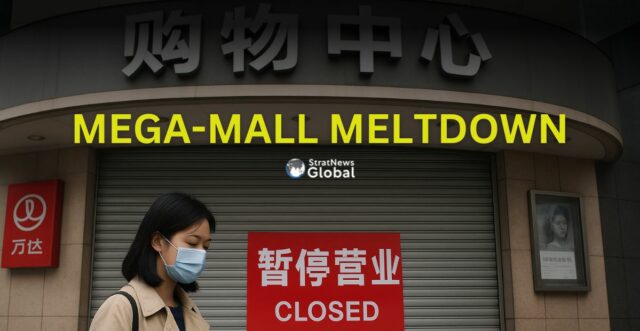China is undergoing a big retail upheaval in decades as once-crowded mega malls across major cities shut down at a historic pace. The country’s urban shopping landscape which was long seen as a symbol of rising middle-class consumption, is now marked by darkened storefronts, empty atriums, and entire wings sealed off.
According to the news media Vietnam.vn, the closures span every tier of the market. In Shanghai, the shutdown of the Pacific Department Store in Xuhui after 30 years and Meilong Isetan after 27 years has shaken the industry.
Beijing’s Parkson at Fuxingmen, an iconic name for more than three decades, has also closed despite paying heavy penalties for ending contracts early.
Even youth-centric malls such as Yingzhan have pulled out of top city areas after falling into debt.
The collapse is not limited to top-tier regions: Shenzhen’s Henggang Rainbow (closed after 15 years), Lanzhou New World Department Store (20 years), and Lanzhou Xidan Mall (22 years) have all shuttered, reports Vietnam.vn.
The downfall reflects the deeper economic stress. Industry data indicates that only a small fraction of major retail companies recorded any growth this year, while the vast majority experienced a sharp drop in profits. Several leading chains also reported notable revenue decreases, reflecting widespread weaknesses across the sector.
The reasons for this change lies in shifts in the spending patterns. The emergence of big e-commerce companies like Taobao and JD.com have replaced the old mall going culture. With the economic slow down and the middle class shrinking their wallets, people chose to save rather than to spend.
This stress is visible in the rental market. According to reports, in Shanghai’s Qipu Road district, rents have collapsed from 70,000 yuan per month to as low as 500 yuan, with many units empty even at that rate.
Data from Cushman & Wakefield, a leading global real estate services firm shows China’s national average vacancy rate for prime retail properties across 15 major cities reached 11.1% in the second quarter of 2025.
Oversupply becomes the added factor to the crisis. As per The New York Times, by the end of 2024, China had over 6,700 large shopping centers, far more than consumption levels can sustain.
China may be witnessing the slow end of its megamall era. With foot traffic dispersing and capital inflows slowing, many malls have devolved into food-court-only complexes.





